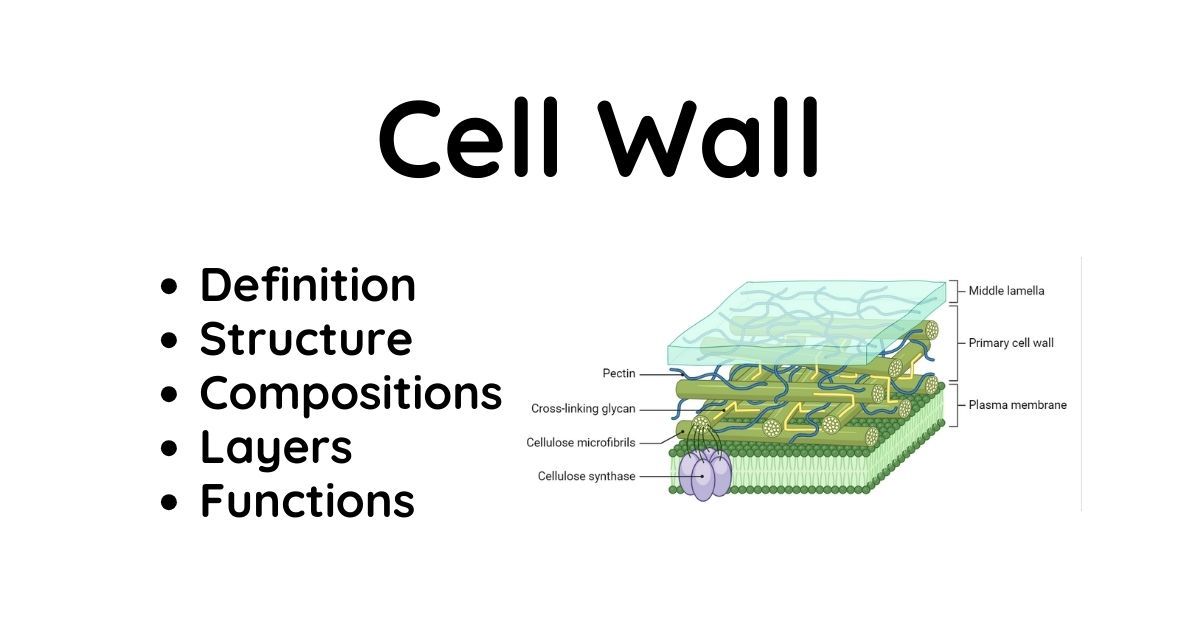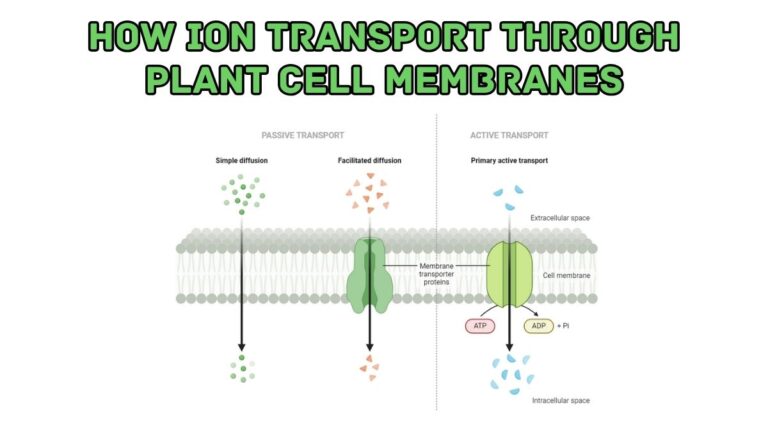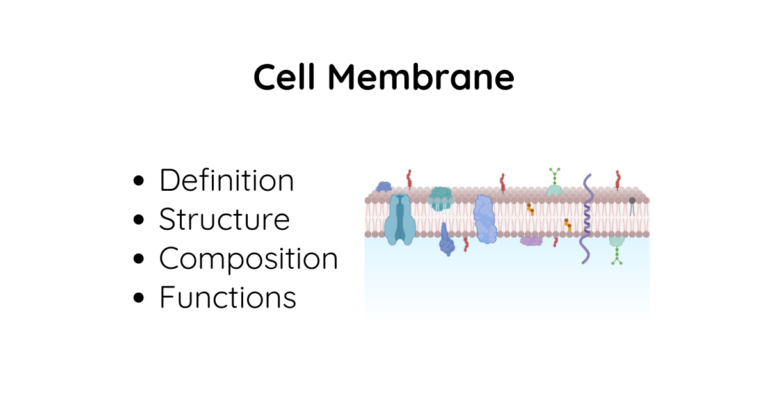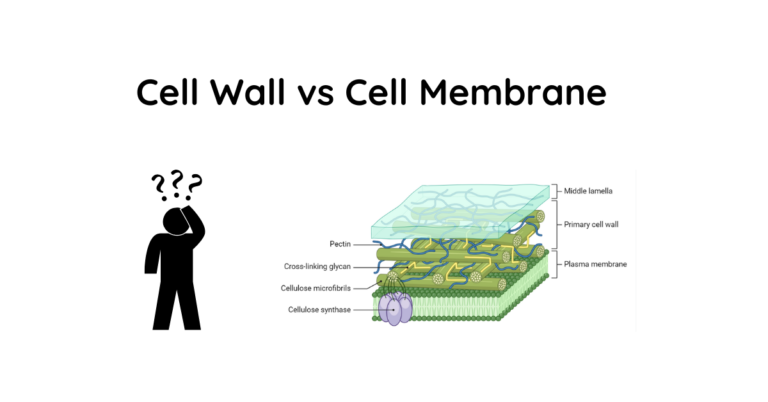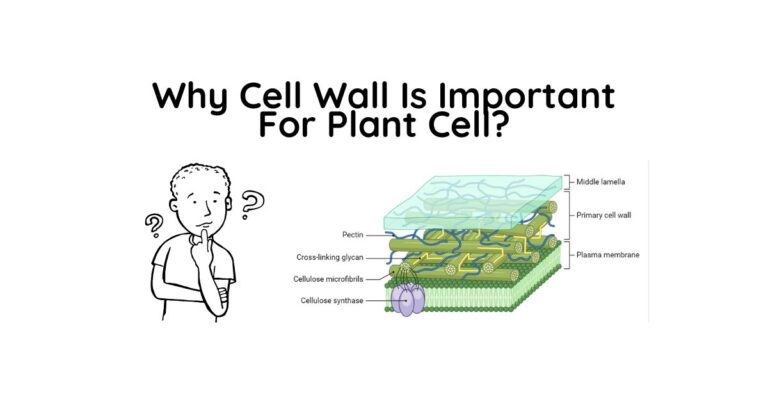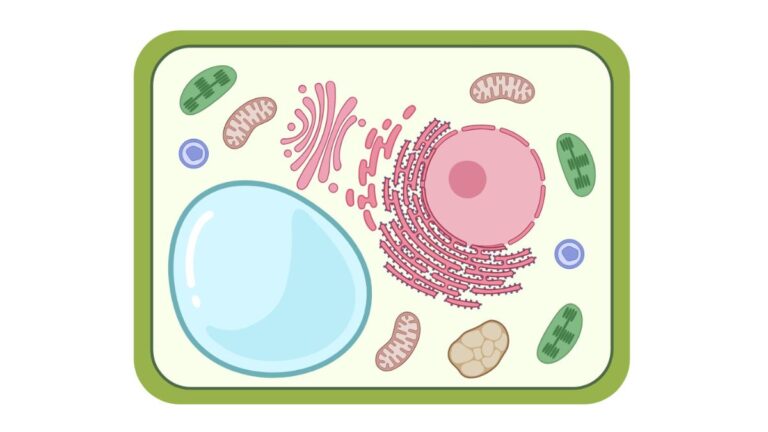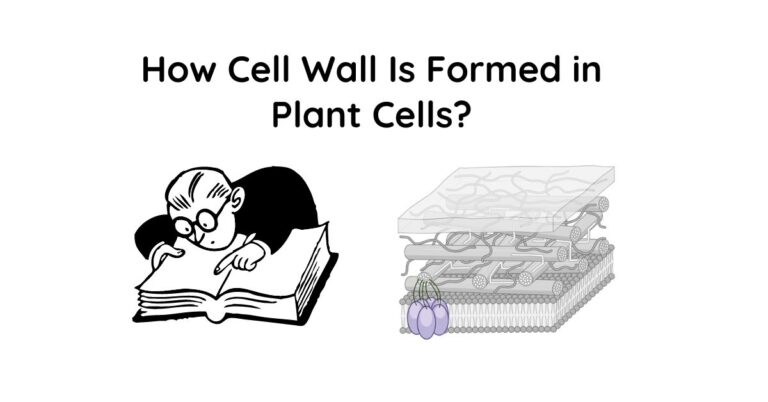Cell Wall: Definition, Structure, Compositions, And Functions
Cell Wall Definition
A cell wall is a protective layer that surrounds the cells of plants, fungi, bacteria, and some other organisms. It is located just outside the cell membrane. The cell wall provides the cell with strength, rigidity, and protection against mechanical stress and cell wall helps maintain the shape of the cell as well as controls cell expansion due to water intake.
What Is Cell Wall?
The cell wall is a rigid layer that surrounds the cell membrane in plants, fungi, algae, and some prokaryotes.
In plant cells, the cell wall is a complex and dynamic structure composed primarily of polysaccharides like cellulose, hemicellulose, and pectin. It provides structural support, and protection, and facilitates communication and transport between cells.
Cell Wall History
The plant cell wall was first observed and named by Robert Hooke in 1665. In 1804, Karl Rudolphi and J.H.F. Link proved that cells had independent cell walls, disproving the previous belief that cells shared walls. The composition of the cell wall was a controversial topic in the 19th century, with debates over whether it grew by apposition or intussusception.
Cell Wall Evolution
The presence of cell walls in many prokaryotes, algae, fungi, and plants suggests it is an ancestral trait retained from prokaryotic ancestors]. The cell wall likely evolved as an adaptation to protect cells and provide structural support, enabling the development of larger, more complex multicellular organisms. Differences in cell wall composition between species reflect evolutionary adaptations to different environments and lifestyles.
Cell Wall Structure
The composition and structure of the cell wall varies between species, but in general, it consists of a framework of cellulose microfibrils embedded in a matrix of other polysaccharides, proteins, and in some cases, lignin.
In plant cells, the cell wall is typically composed of several layers:
- Middle Lamella
- Primary Cell Wall
- Secondary Cell Wall
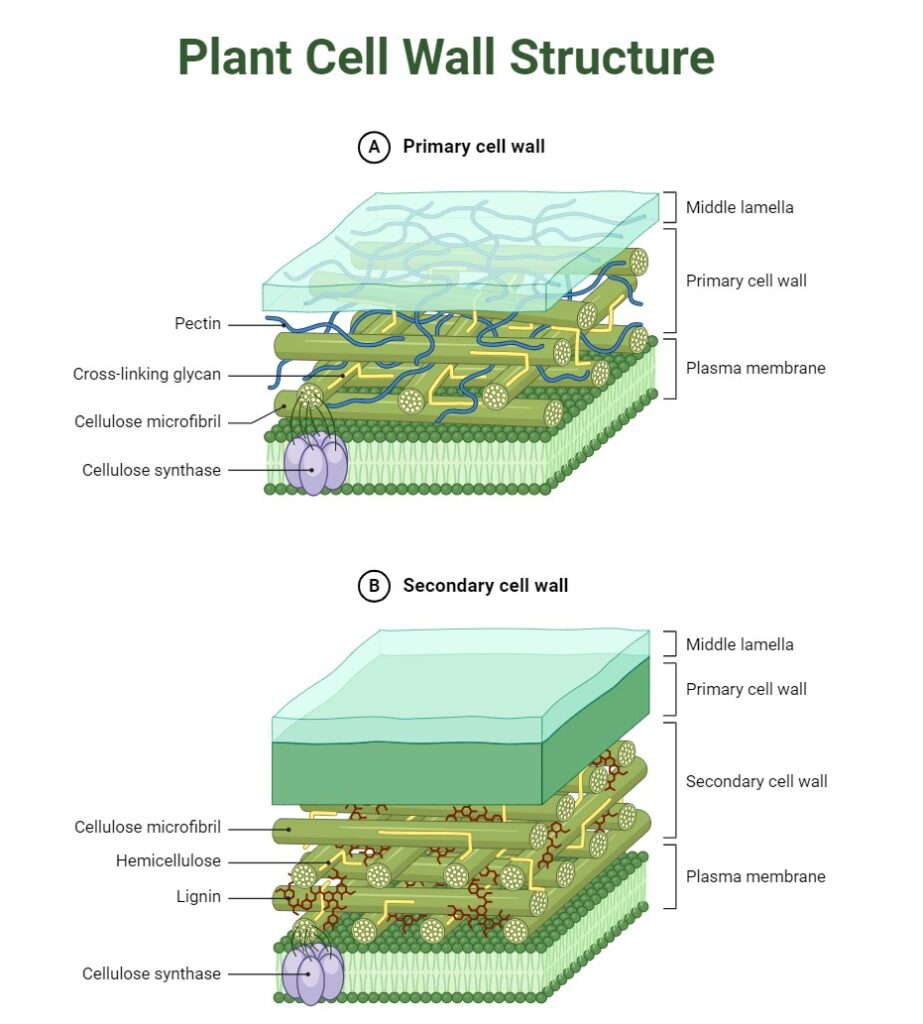
The Middle Lamella
The middle lamella is the outermost layer of the plant cell wall. It is the first layer deposited during cell division when the cell plate forms and develops into the middle lamella.
- Composed mainly of calcium and magnesium pectates (pectin substances)
- Cements the primary cell walls of adjacent plant cells together
- Forms the interface between neighboring cells, gluing them together
- Facilitates formation of plasmodesmata (cytoplasmic connections) between cells
- Often difficult to distinguish from the primary walls, especially in thick secondary walls. In such cases, the two adjacent primary walls and middle lamella are called the “compound middle lamella”.
- The middle lamella plays a crucial role in providing adhesion between plant cells and enabling intercellular connections and communication via plasmodesmata.
The Primary Cell Wall
The primary cell wall is a thin, flexible, and extensible layer formed while the plant cell is growing and dividing.
The primary cell wall in plants characteristically extends by a process called acid growth. This is mediated by expansin proteins that modify hydrogen bonds between cellulose and pectin when activated by acidic conditions, increasing the extensibility of the wall to allow for cell growth.
Its main components and features are:
- Composed of cellulose microfibrils, hemicellulose (like xyloglucan), and pectin
- Contains more pectin than the secondary cell wall
- Allows expansion via an “acid growth” mechanism mediated by expansin proteins
- Outer part may be impregnated with cutin and wax (forming the cuticle)
- Provides structural support while allowing cell growth
- The primary cell wall’s high pectin content and acid growth capability enable it to extend and expand during cell growth and development
The Secondary Cell Wall
The secondary cell wall is a thicker layer formed inside the primary wall after the cell has stopped growing.
Its major characteristics are:
- Composed mainly of cellulose, hemicelluloses (like xylan, glucomannan), and lignin
- Provides mechanical strength, rigidity and protection
- Present in specific cell types like xylem vessels, fibers, anther endothecium etc.
- Deposition is patterned (e.g. annular, helical, reticulate) in different xylem cell types
- Responsible for most mechanical support in plants and wood properties
- The thick, lignified secondary walls provide reinforcement to cells that have completed expansion, enabling structural roles like water/nutrient transport and mechanical support
Cell Wall Properties
The plant cell wall is a strong yet flexible layer that allows the cell to maintain turgor pressure and resist mechanical stress. It is selectively permeable, regulating the passage of molecules in and out of the cell. The cell wall is metabolically active, constantly being synthesized, modified, and broken down in response to growth, development, and environmental cues.
Cell Wall Composition
The primary components of plant cell walls are:
- Cellulose: Long, linear chains of β-1,4-linked glucose molecules that form microfibrils, providing tensile strength.
- Hemicellulose: Branched polysaccharides like xyloglucan that cross-link cellulose microfibrils.
- Pectin: Highly hydrated polysaccharides rich in galacturonic acid that form a gel-like matrix around the cellulose-hemicellulose network.
- Structural proteins: Glycoproteins like extensins and arabinogalactan proteins that are embedded in the wall.
- Phenolic compounds: Lignin, suberin, and other phenolics that can be deposited in secondary cell walls for extra strength and rigidity.
Cell Wall Functions
Provides Structure and Support
One of the most important jobs of the cell wall is to provide structure and support to the cell. In plants, the cell wall is made up of strong fibers called cellulose that help the plant stay upright and maintain its shape. Without cell walls, plants would be floppy and couldn’t grow very tall.
Protects the Cell
The cell wall acts like a protective shield around the cell. It helps prevent the cell from bursting due to water pressure and also keeps harmful substances from entering the cell. In fungi, the cell wall contains a tough substance called chitin that provides extra protection.
Controls Cell Growth
As cells grow and divide, the cell wall needs to expand to keep up. The cell wall controls how much the cell can grow and in what direction. This is especially important in plants, where different cell types need to grow in specific ways to form leaves, stems, and roots.
Helps Cells Communicate
Believe it or not, cell walls also play a role in communication between cells. The cell wall contains tiny channels that allow molecules to pass from one cell to another. This helps cells work together and coordinate their activities.
Defends Against Microbes
In plants and fungi, the cell wall is the first line of defense against invading microbes like bacteria and viruses. Special receptors in the cell wall can detect these invaders and trigger a response to fight them off.
Cell Wall Synthesis
The complex process of cell wall synthesis involves:
- Cellulose synthase complexes in the plasma membrane that extrude cellulose microfibrils into the wall
- Golgi-mediated secretion of matrix polysaccharides like hemicellulose and pectin
- Plasma membrane-localized enzymes that modify and cross-link wall polymers
- Cytoskeletal proteins like microtubules that guide cellulose deposition
- Signaling pathways that regulate wall synthesis genes in response to hormones and environmental cues
Why Cell Wall Is Rigid?
The rigidity of the plant cell wall is due to its unique composition and architecture[1][6]:
- Cellulose microfibrils are stiff, inextensible fibers that resist stretching
- Hemicellulose tethers link microfibrils together, preventing them from sliding apart
- Pectin forms a gel-like matrix that resists compression
- Lignin and other phenolic compounds cross-link wall polymers, further increasing rigidity
This combination of strong fibers and a tight matrix creates a rigid structure that can withstand high pressure and mechanical stress. The degree of rigidity depends on the exact composition of the wall, which varies between cell types.
How Does The Cell Wall Differ In Plants And Animals?
The main differences between plant and animal cell walls are:
| Plant Cell Walls | Animal Cell Walls |
| Composed mainly of cellulose, hemicellulose, and pectin | Animal cells lack cell walls entirely |
| Provide mechanical support and maintain cell shape | Animal cells are supported by the extracellular matrix |
| Prevent overexpansion when water enters the cell | Animal cells do not have large vacuoles and high turgor pressure |
| Glued together by a pectin-rich middle lamella | Animal cells are held together by cell junctions like desmosomes |
| Relatively rigid and inflexible due to cross-linking of wall polymers | Animal cells are soft and flexible to allow movement and phagocytosis |
These differences reflect the distinct lifestyles and functions of plant and animal cells. The rigid cell wall is a key adaptation that allows plants to grow tall, resist gravity, and maintain their shape, while the absence of a wall in animal cells enables them to move and change shape.
How Does The Cell Wall Protect The Cell?
The cell wall protects the plant cell in several ways:
- Mechanical support: The rigid cell wall prevents the cell from bursting due to high internal turgor pressure and maintains cell shape.
- Pathogen defense: The cell wall acts as a barrier against invading bacteria, fungi, and viruses. Some cell wall components can also be released as signaling molecules to trigger immune responses.
- Environmental stress tolerance: The cell wall helps the cell withstand osmotic stress, dehydration, and freezing by providing mechanical strength and regulating water movement.
- UV protection: Phenolic compounds in the cell wall, such as lignin, can absorb harmful UV radiation and protect the cell.
- Herbivore deterrence: Tough, fibrous cell walls make plant tissues less digestible to herbivores. Some plants also deposit silica or calcium oxalate crystals in their walls as feeding deterrents.
Intracellular Communication: How Does The Cell Wall Communicate With Other Cells?
The cell wall participates in communication between cells and the environment in several ways[1][9]:
- Plasmodesmata: Channels through the cell wall that connect adjacent cells, allowing passage of molecules and signals
- Wall-associated kinases: Receptor proteins that sense changes in wall integrity and transmit signals to regulate growth and defense responses
- Oligosaccharins: Wall fragments that act as signaling molecules to elicit defense responses or regulate development
- Mechanical signaling: Wall deformation or stress can trigger changes in gene expression and physiology
Why Cell Wall Is Non Living?
Although the cell wall contains enzymes and participates in cellular processes, it is considered non-living because[1]:
- It is located outside the plasma membrane, which is the boundary of the living cell
- It does not contain cytoplasm or organelles
- It cannot reproduce or carry out metabolism independently of the cell
- It is a secreted extracellular matrix that persists after the cell dies
Why Cell Wall Is Not Present In The Animal Cell?
Animal cells do not have cell walls because they do not require the same level of structural support and protection as plant cells[2]. Other reasons include:
- Animal cells are not subjected to high turgor pressure like plant cells
- Animal cells need to be flexible and motile for functions like phagocytosis and tissue development
- The extracellular matrix of animal cells provides sufficient mechanical and signaling functions
- Cell walls may have been an evolutionary constraint that was lost in the animal lineage
Why Cell Wall Is Present In Only Plant Cell?
The cell wall is a characteristic feature of plant cells because plants have evolved to:
- Grow to great heights and sizes, requiring strong structural support
- Maintain high internal turgor pressure for cell expansion and stiffness
- Be sessile and resistant to environmental stresses and pathogens
- Transport water and nutrients over long distances through specialized tissues
These adaptations are facilitated by the unique properties of the plant cell wall. While cell walls are also found in fungi and many prokaryotes, the specific composition and structure of the plant cell wall is optimized for the needs of plant life.
Prokaryotic Cell Wall
Bacterial Cell Walls
Bacterial cell walls are characterized by the presence of peptidoglycan (murein). Peptidoglycan is a huge polymer consisting of glycan chains (alternating N-acetylglucosamine and N-acetylmuramic acid) cross-linked by short peptides. The peptidoglycan layer is much thicker in Gram-positive compared to Gram-negative bacteria. Gram-negative cell walls also contain an outer membrane with lipopolysaccharides, while Gram-positive walls include other polymers like teichoic acids.
Fungal Cell Walls
In contrast, fungal cell walls have a distinct composition, consisting mainly of chitin, glucans, and glycoproteins[3][6][12]:
| Component | Description |
| Chitin | Linear homopolymer of β-1,4-linked N-acetylglucosamine |
| β-glucans | β-(1,3) and β-(1,6) linked glucose polymers |
| Mannoproteins | Heavily glycosylated proteins, often with mannose chains |
Algae Cell Walls
Algae are a diverse group of photosynthetic eukaryotes that include both unicellular and multicellular forms. The composition of algal cell walls varies widely between different phyla:
- Green algae: Cellulose, xylans, mannans, and hydroxyproline-rich glycoproteins (similar to plant cell walls)
- Red algae: Cellulose, xylans, and galactans such as agar and carrageenan (used as food thickeners)
- Brown algae: Cellulose, alginic acid, and sulfated fucans (used as emulsifiers and gelling agents)
- Diatoms: Silica frustules in a pectin and chitin matrix
Cell Wall In Humans
Human cells do not have cell walls, as they are only found in plants, fungi, algae, and prokaryotes. However, human cells do have an extracellular matrix (ECM) that provides structural support and facilitates cell-cell communication, similar to some functions of the plant cell wall.
Cell Wall Real Life Example
Some everyday examples that illustrate the importance of plant cell walls include:
- Wood: The thick, lignified secondary walls of xylem cells provide the strength and rigidity that make wood a valuable structural material for construction, furniture, and paper production.
- Fruits and vegetables: The primary walls of parenchyma cells in fruits and vegetables determine their texture, crispness, and digestibility. Pectin content and cross-linking affect fruit ripening and softening.
- Cotton and linen: The cellulose-rich fibers of cotton seeds and flax stems are harvested to make textiles like clothing, towels, and bedding. The length and strength of the fibers depend on cell wall properties.
- Biofuels: The cell walls of grasses and woody plants are a major source of lignocellulosic biomass for renewable biofuel production. Efficient degradation of cell walls into fermentable sugars is a key challenge.
- Food additives: Cell wall polysaccharides like pectin, carrageenan, and xanthan gum are used as gelling agents, thickeners, and stabilizers in processed foods. They are extracted from plant, algal, and bacterial sources.
- Dietary fiber: The insoluble fiber in whole grains, nuts, and vegetables largely comes from cell walls that are resistant to human digestive enzymes. Fiber promotes gut health and reduces risk of chronic diseases.
References:
Ezquer, I., Salameh, I., Colombo, L., & Kalaitzis, P. (2020). Plant cell walls tackling climate change: Biotechnological strategies to improve crop adaptations and photosynthesis in response to global warming. Plants, 9(2), 212.
Alberts, B., Johnson, A., Lewis, J., Raff, M., Roberts, K., & Walter, P. (2007). Molecular biology of the cell.
Pogorelko, G., Lionetti, V., Bellincampi, D., & Zabotina, O. (2013). Cell wall integrity: targeted post-synthetic modifications to reveal its role in plant growth and defense against pathogens. Plant Signaling & Behavior, 8(9), e25435.
Zhong, R., Cui, D., & Ye, Z. H. (2019). Secondary cell wall biosynthesis. New Phytologist, 221(4), 1703-1723.

